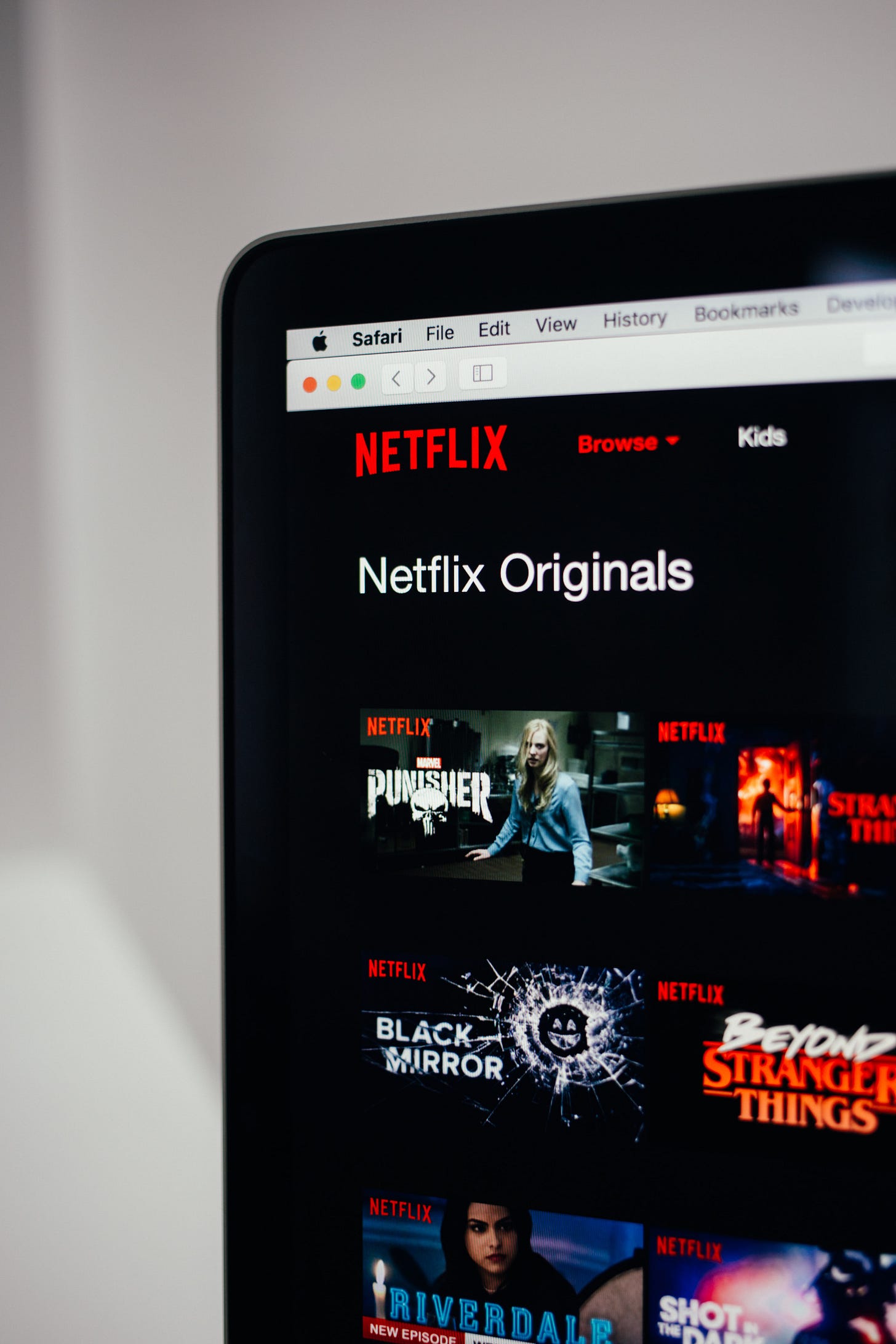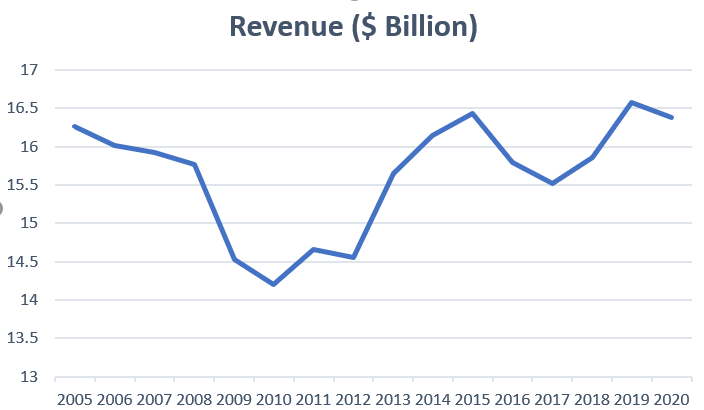[#4] Bridging The Generation "Gap"
Is your organisation ready for analytics powered product development?

Photo by Charles Deluvio on Unsplash
In 2011, Netflix released House of Cards. It became one of the most-watched titles in its library & has since been featured in several internet articles as a shining example of the power of big data. But big data had been there for a long time before House of Cards. What excited many about House of Cards was that it was the first instance of analytics being used for what was a primarily creative exercise.
People began asking, “Can product development be automated?” Some companies found the idea intriguing and began the process of enriching their product development pipeline with analytics.
This article is the story of one such company, The Gap Inc.
Glory Days & Stagnancy
The Gap is an American apparel company that has several brands under its umbrella, most famous of which are Gap, Old Navy & Banana Republic. Historically, it had been the authority on American casual fashion & was a trendsetter. However, after celebrated CEO Millard Drexler left the company in 2002, the company’s sales had been stagnant for more than a decade. During that decade, we also saw the emergence of fast fashion brands like Zara and H&M as well as e-commerce. This brings us to 2014 when Art Peck was appointed CEO of the company.

Peck is an HBS graduate and left The Boston Consulting Group in 2005 to join the company as Executive Vice President of Strategy & Operations. Before his appointment as the CEO, Peck led the digital transformation of the company as the President of Innovation, Growth & Digital. He advocated data-driven decision making and used analytics for various use cases like managing the closure of nonperforming stores & improving customer experience. After becoming CEO, Peck wanted to leverage analytics for new product development & design.
Creative Alchemy or Big Data?
Brands relied on the trendspotting, design instinct & the vision of their creative directors. We could go so far as to say that creative directors were the CEOs of the brands & gatekeepers to the brand vision. These designers, such as Karl Lagerfeld for Chanel & Christopher Bailey for Burberry established the design direction for each fashion line. Their personal vision established & reinforced the look, feel, tone & spirit of the brand.
Peck was skeptical about the entire process. He believed that the creative directors held too much power and a number of top-notch creative directors had come & gone without making a significant mark on sales. He vied to remove the creative director role entirely and use analytics to spot trends & popular designs and get them to market quickly.
“We need great design. We need great creative talent. But we need talent to be part of a highly collaborative team every season. Where we have gone wrong oftentimes as a company is when we put the burden of running these brands season after season on the shoulders of an inspired individual. That’s not the model for success. These are businesses, global in scale & require a highly collaborative team to be a success.”
- Art Peck
Peck’s solution was to spread the responsibility of the brand's design line among a team informed by hard data. He was hoping that by leveraging big data from the beginning of new product development and predict what the new fashion would be in the upcoming season. The strategy relied heavily on customer purchase data obtained from the Gap website. It also collected insights from Google Analytics for trendspotting. On the supply side, Peck tried to imitate the responsiveness of Gap’s fast fashion counterparts and shortened the development cycle lead time for some lines to 8-10 weeks.
Mistakes Were Made
Were they able to replicate Netflix’s success? Apparently not. Gap’s sales barely moved and Art Peck resigned last November. What went wrong? Let’s analyze.
Stuck In The Middle
Traditional fashion houses are good at “trendsetting”. They have long development cycles where the creative director with his/her creative alchemy was able to identify new fashion trends.
Fast fashion companies are good at following trends. They identify what designs are selling the most & get those designs to market within 2 weeks.
Post the implementation, Gap wasn’t able to follow either of the strategies properly. They had stopped the process of new product development through creative directors & had given up on trendsetting. Even though they were able to identify trends early, the development cycle was 8 weeks long which was still 4 times longer than the other fast fashion brands.
This is a classic case of what is called “misalignment” of strategy in business jargon.
Gap’s Data Is Not Very “Big”
The 3 Vs of Big Data are Velocity, Volume & Variety. However, Gap was heavily dependent on customer purchase data from its stores. There was a little amount of clickstream data because a very small percentage of sales happened via their website.
Compare that to Netflix which had rich insights available from watch time & streaming data. The predictive insights that Peck imagined would guide Gap’s product development were outputs of highly homogeneous data points because of which rich data insights like those which resulted in House of Cards didn’t materialize.
Underestimating Human Instinct
An interesting thought I came across while reading Malcolm Gladwell’s “Blink”, was that the human subconscious of experts often trains itself to give the right answer and interpretation in the form of instinct. While it is often good to question what comes instinctively to the mind, it is a mistake to completely discount it, especially if the person is an expert.
Such instincts are often looked down upon because the biggest disadvantage of such instincts are the lack of an explanation. The same mistake was made by Gap when they decided to get rid of creative directors.
Why then did Creative Directors fail in the first place? Maybe the product was never a problem. Maybe the existing creative directors just weren’t the right people to lead the brand. Would Gap have done better if they had used analytics for headhunting? Would Gap have done better to use analytics as a supporting tool for creative directors?
“We start with the data, but the final call is always the gut. It’s informed intuition. Data Science simply isn’t sophisticated enough to predict whether a product will be a hit” - Reed Hastings, CEO, Netflix
Concluding notes
Using big data analytics to power one’s organization does not just require investment in infrastructure. An organization must first figure out what they want from big data analytics and whether that aligns with their strategy.
Next, they need to figure out how they should implement the strategy change. Implementing data analytics as a core part of corporate strategy will need to be accompanied by a significant organizational change exercise.
Finally, at least at the time we are in history, it is impossible for a computer to replace human creative process & instinct, even though there have been significant strides in AI these past few years. Can AI replicate what humans do? Food for thought.
Let us what you think in the comments.
References
Safdar, Khadeeja (2016), “As Gap struggles, Its analytical CEO Prizes Data over design” Wall Street Journal
Schlossberg, Mallory (2015), “Gap isn’t cool anymore - Here’s Its Master Plan to Change That” Business Insider
Carvell, Nick (2016), “The Great Creative Director Experiment Continues”, GQ Magazine
“Product 3.0 at Gap” case study by HBS
But first, if you’re receiving this newsletter for the first time, please take a moment and sign up.
Views expressed here are our own and don’t reflect the views of any of our employers, or educational institutions present or past.
Thank you for reading. We hope it was worth the while and left you better than it found you! :)
Liked what you read? Why don’t you share it with your friends? We need all the love we can get!



